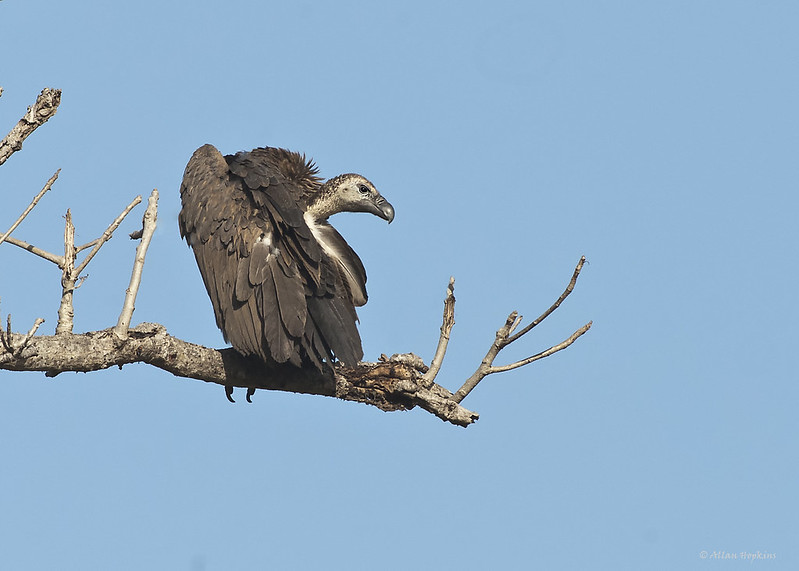
In the 1990s, more than 99% of some vulture species in India died. The main cause was the use of a veterinary drug, diclofenac.
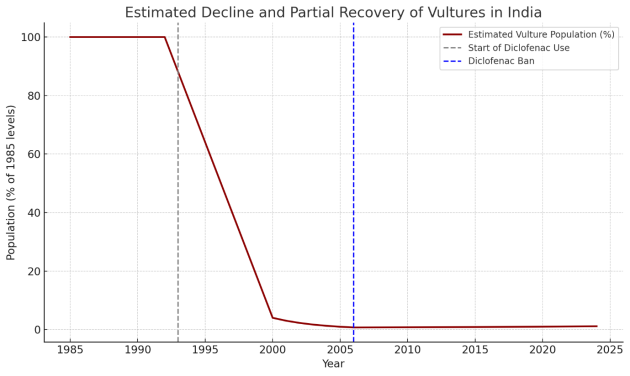
Diclofenac was not intended to poison vultures. Farmers used it to treat working cattle and water buffalos suffering from injuries, fever, and other illnesses. However, in rural India, corpses of dead cows and buffalos were often left out in the open to rot – an attractive food source for vultures.
Diclofenac Structure
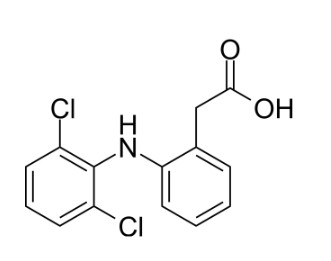
Diclofenac had originally been developed for human use as a pain reliever. However, in the early 1990s, Indian veterinarians increasingly started the off-label use of diclofenac for cattle, as it is cheap and effective to treat pain and inflammation. Its use then became more and more widespread.
At that time, scientists started observing a very rapid decline in vulture populations (see the graph). Detailed research around 2003 identified diclofenac as the main cause of the vulture deaths. India eventually banned veterinary diclofenac in 2006, but some illegal use of human formulations for animal use continued.
Why did the vultures die? When they ingest even tiny amounts of diclofenac from carcasses, the drug interferes with the uric acid metabolism in the kidneys. In birds, uric acid is the main waste product for nitrogen (unlike in mammals, where it is urea). Diclofenac damages parts of the kidneys responsible for filtering blood, ending the excretion of uric acid, which then builds up in the blood. There, the uric acid soon crystallizes and deposits on internal organs, including the liver, the heart, the lungs, and the kidneys. Death from organ failure follows within a few days.
On a molecular level, diclofenac inhibits cyclooxygenase enzymes, particularly one named COX-1. These enzymes are important in the production of prostaglandins, which regulate blood flow in the kidneys. Lacking these prostaglandins, the kidneys do not get enough blood supply and cannot properly fulfil their filtering functions.
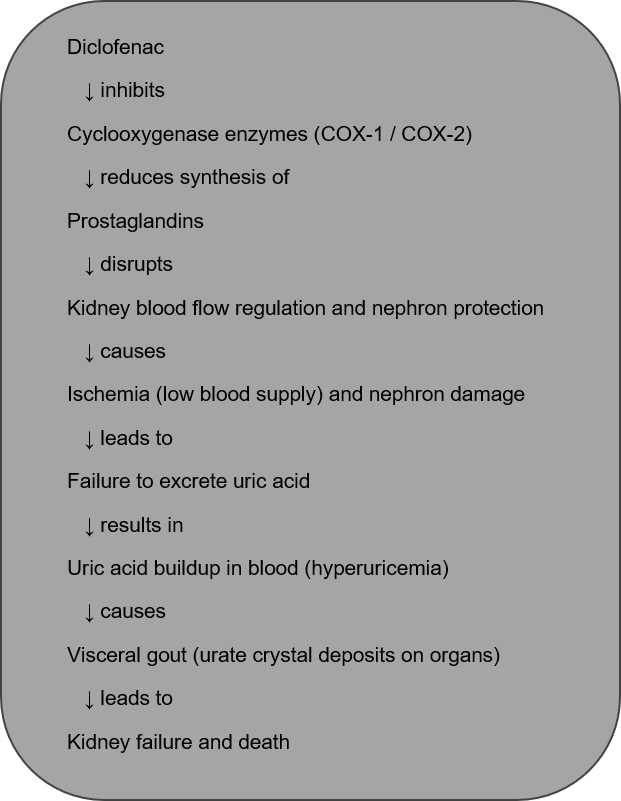
Vultures in the Genus Gyps are the most affected by diclofenac, as their lethal diclofenac can be as low as 0.1 mg/kg of body weight. A White-rumped Vulture weighs about 4-6 kg, so it may die on a dose of 1 mg, while a typical treatment of a cow requires as much as 200-500 mg of diclofenac.
Other Gyps species heavily affected by diclofenac are the Long-billed Vulture, Slender-billed Vulture Red-headed Vulture. All four species are currently listed as Critically Endangered. A contributing factor is that recovery is very slow due to the long reproduction cycle of the bird and the fact that each breeding attempt only produces one egg.
Other bird species are much less affected by the drug. For one thing, most birds do not feed on carcasses, and those that do (such as New World Vultures) do not often live in areas in which diclofenac is used. It also seems that the biochemistry and kidney setup make the Gyps vultures more vulnerable to diclofenac than raptors that also feed on carcasses.
Ironically – and allowing me to use the cliche of vultures as nature’s sanitation service – the decimation of the vultures caused large damage to humans as well. A study published in the American Economic Association Journal claims that their loss led to the spread of deadly bacteria and infections, and subsequently to an estimated 500,000 additional human deaths over five years.
Sources:
- Diclofenac
- Toxicity of diclofenac to Gyps vultures
- Human Consequences of Vulture Deaths
- Vulture Poisoning Mechanism
Photo: “White-rumped Vulture (Gyps bengalensis)” by Allan Hopkins is licensed under CC BY-NC-ND 2.0.







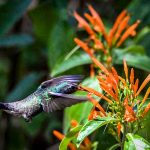





Fortunately, Boehringer Ingelheim immediately stopped the selling of the drug in countries with a vulture population. They worked really hard to avoid the spread of the harmful effects like a responsible company would do. Yes, I am very sarcastic!!! https://4vultures.org/blog/iran-bans-veterinary-diclofenac-in-the-meanwhile-the-european-union-drags-its-feet-and-continues-to-threaten-europe-s-vultures-sign-the-petition-by-a-british-mep/
Well done Kai – that’s the most lucid explanation of this disaster that I’ve read.
Seeing a vulture in India remains a noteworthy event.
Thanks, David, glad to hear that! So far, the series on The Chemistry of Birds seems not to have interested many readers, but I think there are quite a few topics to cover – and I will do that, whether there are readers or not 🙂
Very interesting, as a veterinarian who has used diclofenac on occasion, mostly in small animal. Fortunately I’m based where there are only New World Vultures.